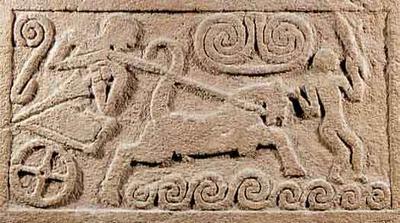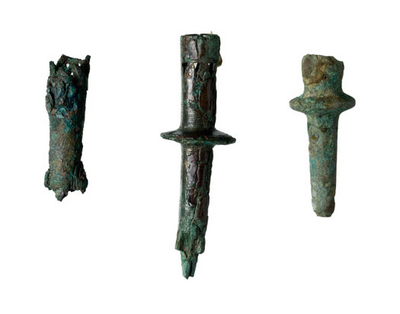Where do the chariot parts come from?
The bronze objects from Gallemose weigh 11,735 grams. They must have been worth a fortune, especially in an area like Denmark, where copper and tin do not occur naturally. Bronze, which is an alloy of these component metals, must have been imported. The ornamentation on some of the axes tells us that they were produced in the British Isles and in central Germany, but other objects must have been made in Denmark. The chariot parts are unique, and we do not know where they were produced. The closest parallels are to be found in Tutankhamun’s tomb in Egypt and in depictions of horse-drawn vehicles on Greek vases.


